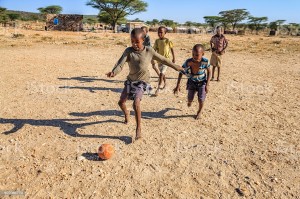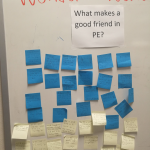During a typical year, it’s a challenge getting some kindergartners into school the first day. They are usually crying and hugging their parents, refusing to let go to enter the building. It takes some very convincing, persuasive talks to get them in. This usually lasts a week or two.
The first day of school this year, however, was quite different. When they dropped the kids off, I felt like some of the cars didn’t even stop before kids jumped out. The pandemic changed the dynamic of nearly every family’s home environment. Because they were in quarantine, both children and parents were tired of being “stuck” inside together all day. Many parents had to balance work and caring for multiple children. Because of the many challenges this caused, both parents and students are now starting to appreciate and value being in school more, specifically valuing their teachers.
Parents showing gratitude:
Some parents have always truly appreciated teachers, especially if they value quality education or are teachers themselves. They understand how hard teachers work, and what a challenging profession it is. They know we would do anything for their child. They send us “Thank You” notes for helping their child all year. They believe us when we bring up their child’s behavior that concerns us rather than thinking we are the problem. They are always here for us when we need anything (equipment, lunch, or even just a coffee). I can’t say how much we teachers appreciate them.
On the flip side, some families haven’t fully grasped that concept, until now. To be clear, I’m not upset about it. I understand that people have busy schedules and many things on their plate. Maybe they just have never thought about the workload of their child’s teachers. As a physical education teacher, I teach all 400 students in the school. It is challenging, especially trying to build deep relationships with each one. Some parents told me of their time in quarantine, “I can’t take this anymore, and I only have 3 kids. I don’t know how you do this.” Due to the pandemic, most families are starting to recognize the value of school and their teachers, now realizing what teachers understood all along.
Teaching students gratitude:

Gratitude is one of our “Essential Agreements” (class expectations) we created as a class at the beginning of the year (Thanks Joey Feith for the visuals). My students and I have always felt it is important, but especially this year. Because we added “gratitude” as a group, students feel ownership and are more likely to follow through. Many students ARE showing gratitude since being pack in person. Even though they don’t like wearing masks, students agreed that they would rather wear masks and be in person, than no masks and continue with online learning. I haven’t had any real behavior issues since being back in person, and feel it’s because of our talks about how good it feels to be back in school and our friends, something they took for granted before. I was originally worried about students keeping their masks on, especially younger ones, but they have done amazing. Our teachers provided some great videos and visual reminders to help them understand that masks are to keep everyone safe. It’s a great opportunity to talk about social awareness and empathy. Students also understand that wearing the mask shows that they care about the health and safety of their classmates. To be honest, I think students have been better about wearing their masks than many adults!
Teaching students perspective:

I believe it’s important to teach students to recognize how blessed we truly are. Each year, we discuss how we have shoes, clothes, food, shelter, etc., where many children around the world don’t. I show them our equipment room full of new balls, scooters, parachutes, gymnastics mats, etc. I then show a picture of children who can’t afford shoes, yet still having fun playing soccer. They don’t think about what brand of shirt or ball they have, they are just happy to have something. With the pandemic causing many negative feelings in children, this helps relieve them a bit. Their arguments about what they are having for dinner or what movie the family will watch now seem fairly silly.
In addition to in-person physical education, I am also teaching a few classes online, They are happy to still have synchronous PE, where they can interact with me and classmates, while some schools are not. For example, we discussed how fortunate we are to have technology like “Zoom” and “Flipgrid” because it allows us to interact, despite being in different places. Even though they are at home, they still feel connected apart of something bigger than themselves. There is still a sense of togetherness and community. If this pandemic happened thirty years before this technology was available, who knows how school might have looked. I made sure students understood this, and how blessed we are.
While I admit that I am blessed with amazing students, I feel all children (and adults for that matter) could benefit from learning (or reviewing) gratitude and perspective. As teachers and parents, we have the power to teach children these at an early age. Possessing these characteristics will have a much bigger impact on their life compared to how good they are at spelling, how far they kick a ball, or whether they understand the quadratic formula. Whenever there is a challenge (in this case, this pandemic is a MAJOR challenge), I try to stay positive and find a silver lining, while also teaching my students to do the same. This pandemic has helped me bring gratitude and perspective to the forefront of my lessons, which have benefited students. That sounds like a silver lining to me.










Comments 1
I agree I have seen many people taking stock of what truly matters.